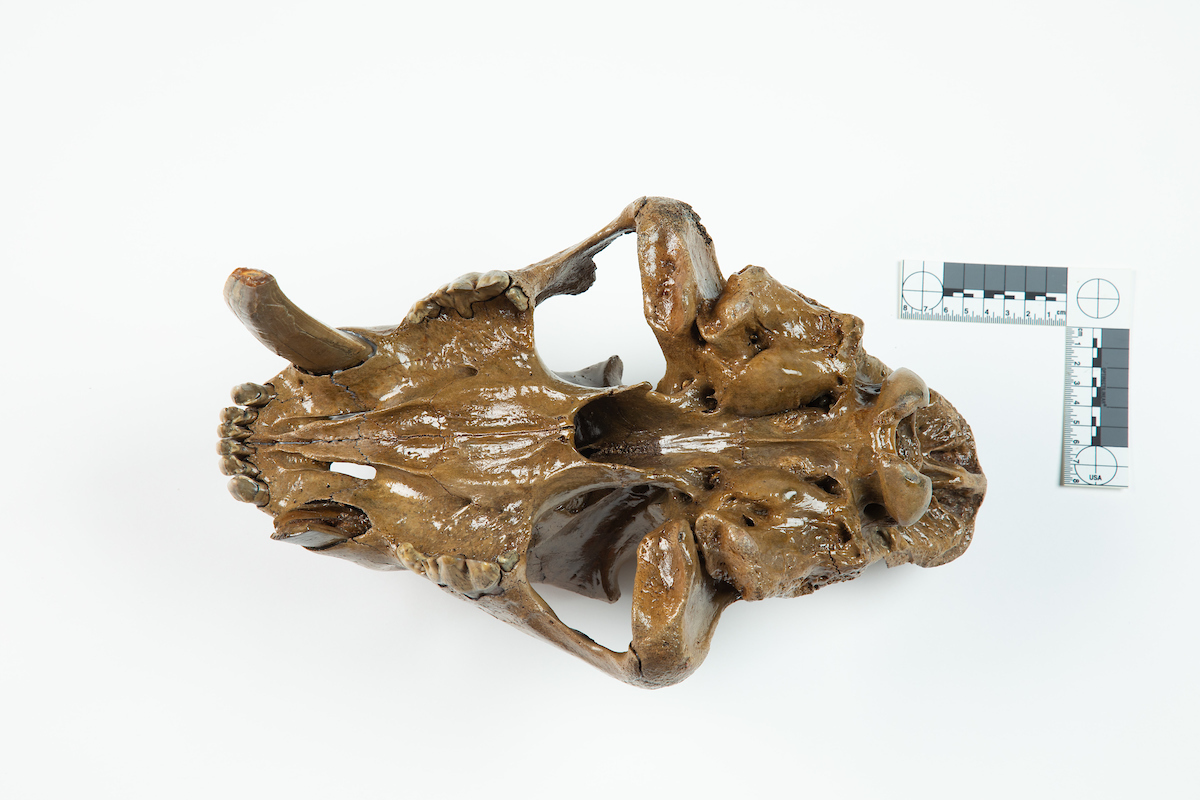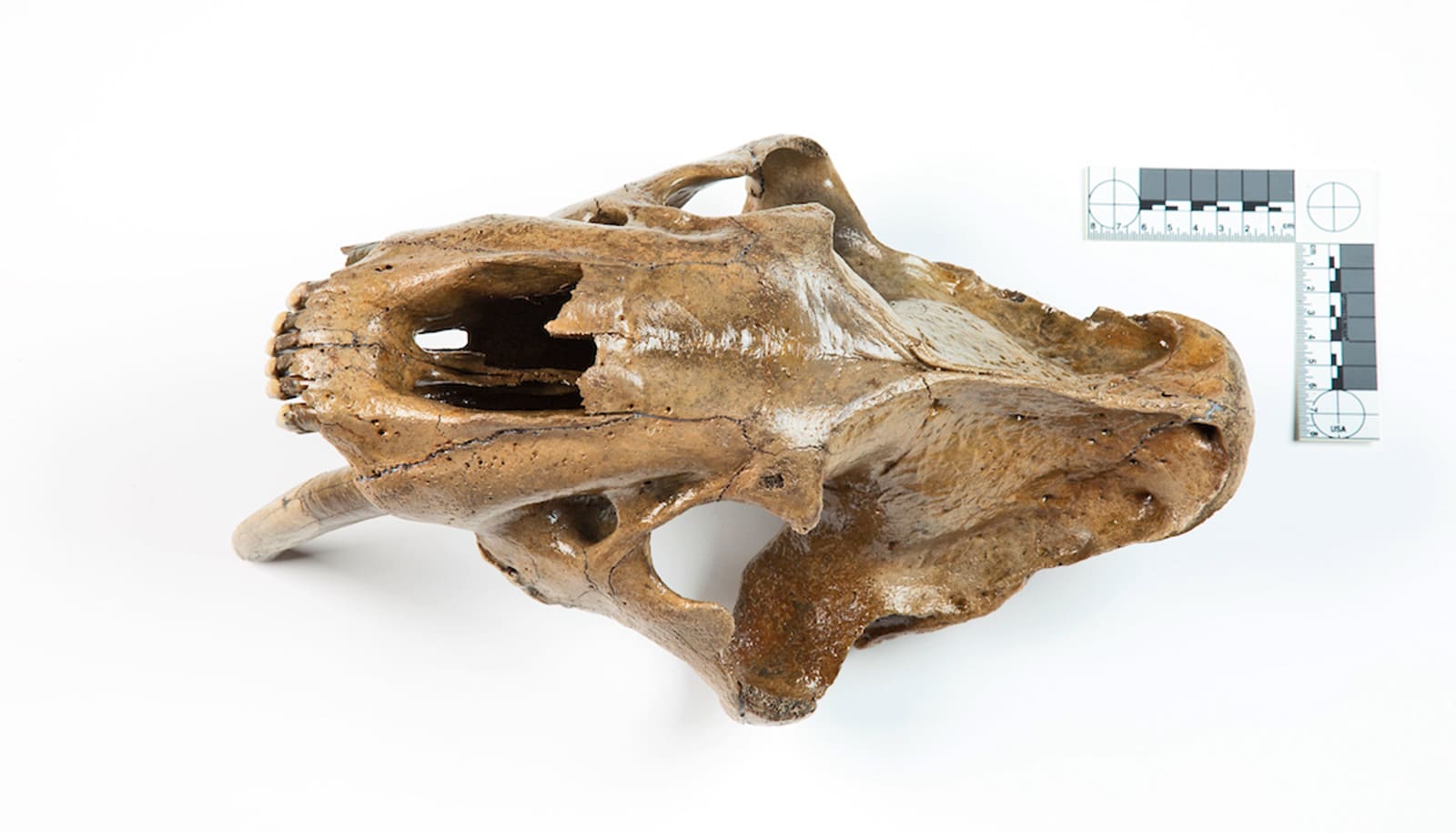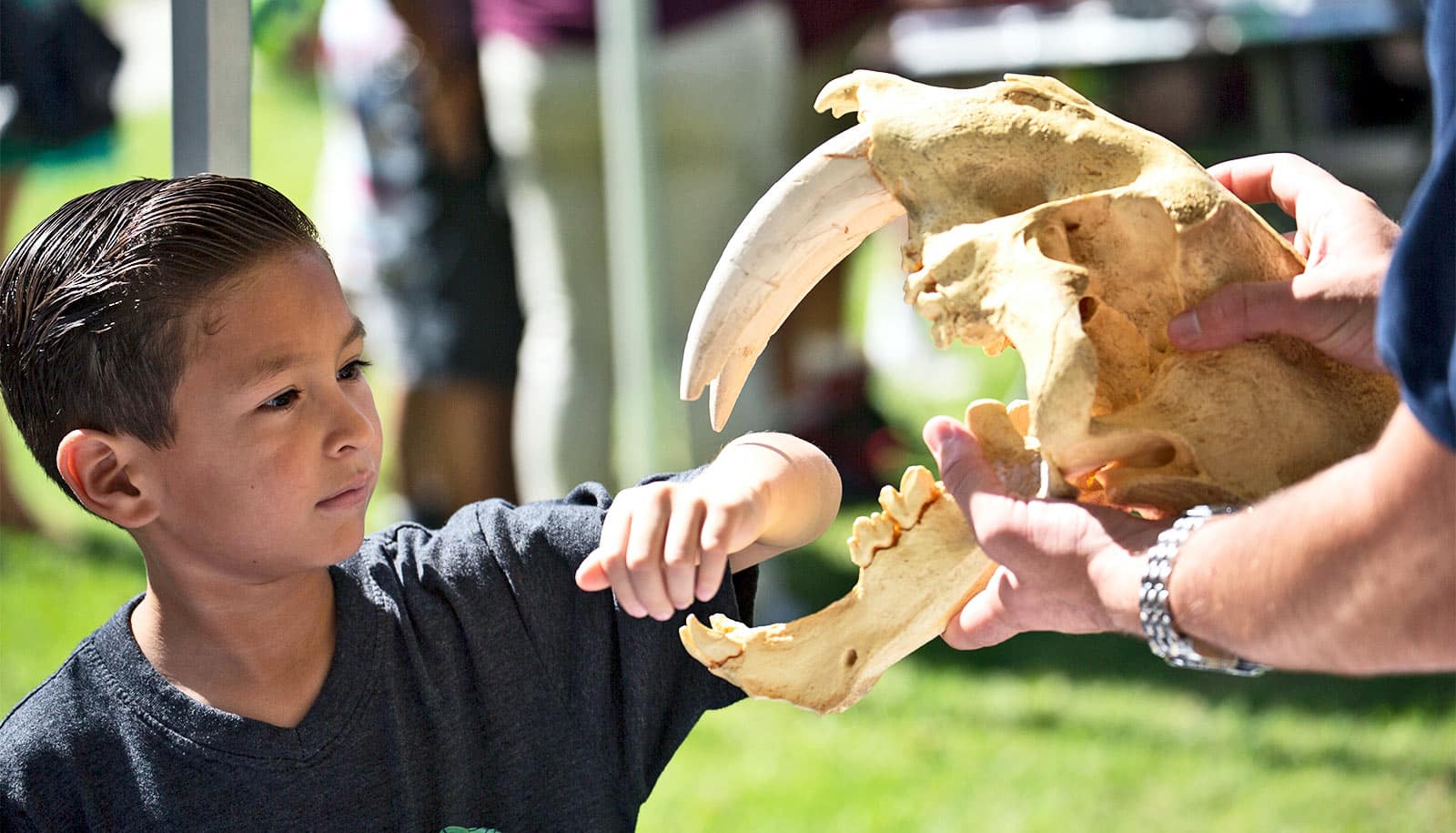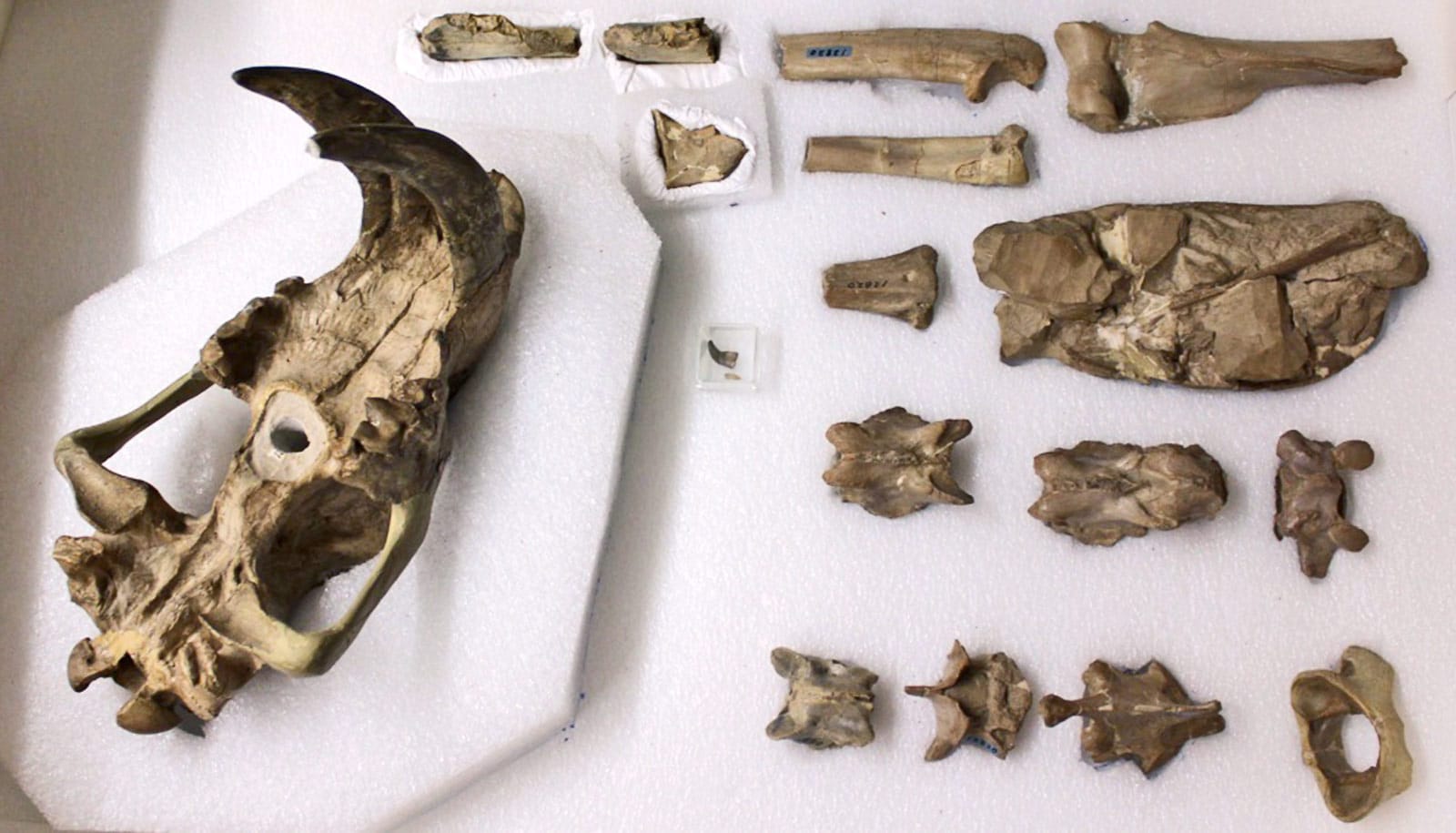The recent discovery of a sabertooth cat skull in southwest Iowa is the first evidence the prehistoric predator once inhabited the state.
The chance of finding any fossilized remains from a sabertooth cat is slim, says Matthew Hill, an associate professor of archaeology at Iowa State and expert on animal bones. The remarkably well-preserved skull found in Page County is even rarer, and its discovery offers clues about the iconic Ice Age species before its extinction roughly 12-13,000 years ago.
“The skull is a really big deal,” says Hill. “Finds of this animal are widely scattered and usually represented by an isolated tooth or bone. This skull from the East Nishnabotna River is in near perfect condition. It’s exquisite.”

Hill analyzed the specimen in collaboration with David Easterla, professor emeritus of biology at Northwest Missouri State University. Their findings appear in the journal Quaternary Science Reviews.
The researchers used radiocarbon dating to determine the cat died at the end of the Ice Age between 13,605 and 13,460 years ago. Hill says it may have been one of the last sabertooths to walk the planet as glaciers receded and temperatures rose.
“We think southwest Iowa during this period was a parkland with patches of trees interspersed with grassy openings, somewhat similar to central Canada today,” says Hill. “The cat would have lived alongside other extinct animals like dire wolf, giant short-faced bear, long-nosed peccary, flat-headed peccary, stag-moose, muskox, and giant ground sloth, and maybe a few bison and mammoth.”
Sabertooth fossil clues
Hill and Easterla believe the skull belonged to a subadult (2-3 year old) male when it died. Gaps between the skull’s boney plates indicate its head was still growing, and the permanent teeth don’t show much wear from cutting and chewing. To figure out its sex, they compared its skull measurements with adult male and female sabertooth skulls from the Rancho La Brea tar pits in Los Angeles.
Hill explains sabertooth were sexually dimorphic, meaning males were larger than females. Since the Iowa skull is larger than many male skulls from the tar pits, the researchers argue it belonged to a male. They estimate the Iowa cat weighed about 550 pounds at death and may have approached 650 pounds as an adult in prime physical condition. In comparison, the average adult male African lion weighs about 400 pounds.
How the sabertooth cat died is not clear. But a broken canine might offer a clue. Hill and Easterla speculate the animal was seriously injured while attacking prey, which ultimately proved fatal within days of the trauma.
Small patches of worn-down bone on top of the skull indicate it slid along a river-bottom before coming to rest and then buried for thousands of years.
“We can learn a lot from these types of fossils. They hold clues about the ecology of the animals, and how they respond to dramatic climate change and the appearance of a new predator and competitor on the landscape, including people,” says Hill. “Iowa is a fantastic laboratory to do research on extinct Ice Age animals and the people who were just beginning to share the landscape with them.”
Eclectic diet
Research opportunities with the sabertooth cat skull don’t end with the published analysis, the researchers say.
Hill suspects the cat’s primary prey was Jefferson’s giant ground sloth, which were common in Iowa during the Ice Age. They’d sit beside trees and bushes and pull in leaves and buds to eat. At 8-to-10 feet tall and over 2,200 pounds, giant ground sloths were massive. Hill believes only a large predator armed with “absolutely lethal jaws and claws” and legs designed for pouncing could hunt them regularly.
To test this, Hill is teaming up with Andrew Somerville, assistant professor of archaeology at Iowa State who is an expert in dietary reconstruction using bone geochemistry. Together, they’re developing a stable isotope mixing model with samples from the sabertooth cat, other carnivores, and herbivores (e.g., Jefferson’s ground sloth, muskox, stag-moose.)
“You are what you eat, and it’s locked in your bones,” says Hill.
Stable isotopes make it possible for researchers to know what plants herbivores eat and, in turn, what herbivores carnivores eat. They can piece together local food webs and how species filled ecological niches.
“So, maybe the sabertooth was primarily eating giant ground sloth, dire wolves, primarily moose, and short-faced bears, a little bit of everything. Andrew and I are going to figure it out,” says Hill.
The researchers expect to publish their findings in the coming year.
Source: Iowa State University



